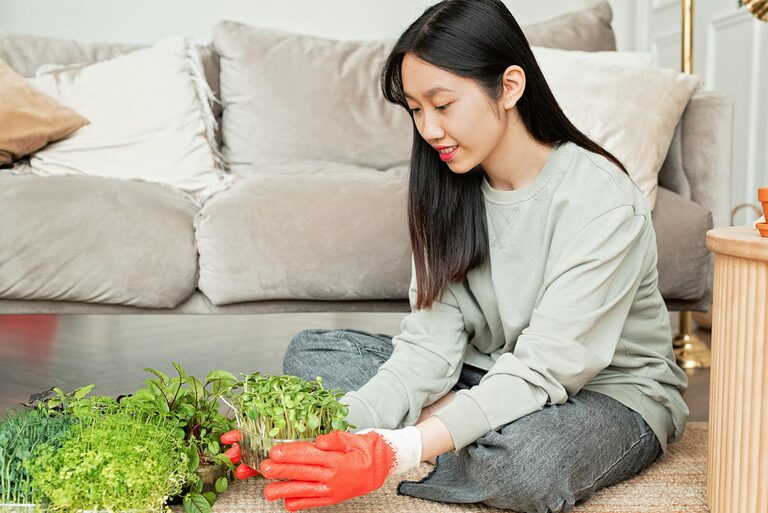
Bringing houseplants into your home can add beauty, improve air quality, and boost your mood. However, keeping them healthy requires some basic knowledge and consistent care. Whether you are a beginner or a seasoned plant lover, these essential tips will help your houseplants thrive year-round.
Understanding Your Houseplants’ Needs
Every plant species has unique requirements, but there are common factors crucial for their well-being.
Light
Light is one of the most important elements for photosynthesis. Pay attention to the lighting needs of your plants:
– Bright light: Cacti, succulents, and many flowering plants need several hours of direct or bright indirect sunlight.
– Low light: Some ferns, snake plants, and pothos tolerate or prefer low-light conditions.
Place your plants accordingly, and rotate them periodically so all sides receive light evenly.
Water
Watering is often the trickiest part of plant care. Overwatering or underwatering can harm your plants.
– Check the soil moisture before watering—most plants prefer dry or slightly moist soil between waterings.
– Use pots with drainage holes to prevent water accumulation, which can cause root rot.
– Adjust watering frequency with seasons; most plants need less water in winter.
Humidity and Temperature
Many houseplants come from tropical climates and thrive in humid environments.
– Increase humidity through misting, grouping plants together, or using a humidifier.
– Keep plants away from drafts, heating vents, and air conditioners.
– Maintain a comfortable indoor temperature between 60°F and 75°F (15°C – 24°C).
Choosing the Right Soil and Pots
Healthy roots mean healthy plants. Selecting the right soil and pots is critical.
Soil Type
Use potting mixes suited to your plant species:
– Succulents and cacti prefer fast-draining, gritty soil.
– Tropical plants benefit from rich, moisture-retentive soil.
Avoid using garden soil as it may be too dense and contain pests.
Pot Selection
– Choose pots with drainage holes to prevent waterlogging.
– Match pot size to the plant—too large can cause roots to stay excessively wet; too small can restrict growth.
– Consider decorative pots with a drainage tray to catch excess water.
Fertilizing and Feeding
Plants need nutrients to grow strong, but more isn’t always better.
– Use a balanced, water-soluble fertilizer every 4-6 weeks during the active growing season (spring and summer).
– Reduce or stop fertilizing during the winter months when growth slows.
– Follow label instructions carefully to avoid burning the roots.
Pruning and Maintenance
Regular maintenance keeps plants healthy and looking their best.
Pruning
– Remove dead, yellowing, or diseased leaves promptly.
– Trim leggy growth to encourage bushier development.
– Use clean, sharp scissors or pruning shears to avoid infections.
Cleaning
Dust can block light and hinder photosynthesis.
– Wipe leaves gently with a damp cloth or give plants a gentle shower.
– For fuzzy-leafed plants, use a soft brush to remove dust.
Monitoring for Pests and Diseases
Houseplants can sometimes attract pests such as spider mites, aphids, or mealybugs.
– Inspect plants regularly, especially the undersides of leaves.
– Isolate new plants before introducing them to your collection.
– Treat infestations early by washing affected areas with mild soap and water or using insecticidal soap.
Repotting Your Plants
As plants grow, their roots need more space.
– Repot when roots start to grow out of drainage holes or the plant looks crowded.
– Choose a pot one size larger than the current one.
– Refresh the soil during repotting to provide fresh nutrients.
Additional Tips for Success
– Avoid sudden changes in environment, which can stress plants.
– Use a moisture meter if unsure about watering frequency.
– Keep a care schedule or journal to track watering, feeding, and other care routines.
– Learn about each plant’s specific requirements to provide the best care.
Conclusion
Caring for houseplants is rewarding and can be simple with the right approach. By understanding their needs related to light, water, humidity, soil, and maintenance, you can enjoy thriving, green indoor spaces. Regular attention and small adjustments will help your plants flourish and bring long-lasting beauty to your home.
Start with one or two plants to master these basics, and soon you’ll gain the confidence to expand your indoor garden. Happy planting!

